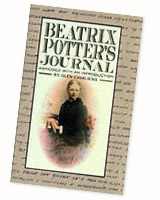 I’m a big fan of keeping an idea notebook. There’s been research done that indicates it’s a real aid to creative effectiveness. Any innovator worth his — or her — salt should be keeping some kind of idea notebook.
I’m a big fan of keeping an idea notebook. There’s been research done that indicates it’s a real aid to creative effectiveness. Any innovator worth his — or her — salt should be keeping some kind of idea notebook.
I’ve been researching and speaking about famous notebook users and it occured to me (okay, I was told…) that all my examples — Edison, DaVinci, Kerouac, etc. — are men. The first woman that came to mind, Madame Curie, probably kept lab notebooks, but I can’t seem to find documentation to support the claim. Google, for once, let me down — couldn’t seem to find women idea note-bookers.
I put out a call to my network for examples of Idea-Notebook-using-women, and I got back some interesting (and documented) suggestions. Thanks and a shout out to Maggie Dugan for helping me find some of the data below. Maggie is a lovely writer and blogger, check out her online notebook, Maternal Dementia.
So, here are some grand examples of women note-bookers:
Beatrice Potter was a classic note-booker. For the 15 years prior to the publication of Peter Rabbit, her breakout children’s book, she wrote about the sublime and the ridiculous, the personal and the political, nature and fantasy — all with sketches and other glued in visuals. Get this, it was written in code, to keep her mother from invading her privacy. The code was simple, but not broken until 1958 (she died in 1943.) It was eventually published as, Beatrix Potter, a Journal. Little did I know that Potter was not only a famous illustrator and writer, but a noted amateur mycologist (fungus). Her illustrations of fungi made her a respected amateur scientist of her day.
Twyla Tharp, the choreographer, is another good example, albeit a bit different. She “notebooks” in a three dimensional way. She starts up a box for each new project — you know, one of those clean looking plastic jobs you find at Staples. When she was putting together the coreography for Movin Out, her take on Billy Joel’s music, she would add DVD’s, books, bits of fabric, hats, ideas for costumes, and the such as she was developing the project. I like the way she broadens what note-booking can be to serve her creative ends.
In researching this topic I was directed by executive Jayne Homsher to speak with a contemporary woman scientist, Pam Menges. Pam is doing some fascinating work developing wind technology for community power usage. She’s CEO of ARSI (Aerospace Research Systems, Inc.) I’ll be writing more about her as she has some interesting things to say about the state of innovation infrastructure in America. For now, note that she always keeps a pencil and paper handy, and, because her work is collaborative with other scientists, she uses virtual white boards and wiki type tools to invent/innovate.
There were other good suggestions: Virginia Wolfe, Emily Dickinson, Martha Gellhorn (a depression era reporter), Dorothy Parker, Isabelle Allende, and poet Jane Williams. Julia Cameron deserves her own category — as her “morning pages” are a very specific type of note-booking meant to clear space for other types of writing. It sure worked for her (over 30 published books, plays, scripts).
The point here, for women AND men, is simple: keep an idea notebook. Adapt it to your needs. Note your fleeting thoughts and ideas, and develop, harvest, and implement them. With any luck it will lead to your breakout idea, your Peter Rabbit.



5 responses to “Women Innovators Who Use Idea Notebooks”
Hi Gregg,
Thanks for the great reminder! I don’t know when I stopped carrying a small notebook with me to jot ideas down but from now on there will be one in my car, one in my purse, and one next to my bed.
This is great timing. I just returned from the Creativity weekend at the Abode so I’m full of new ideas.
Kathleen
Margaret Sanger is another powerful woman who kept a journal –that’s another term for an idea notebook, isn’t it?. Her innovation was in the realm of women’s reproductive rights!
Journaling is simple–yet tricky. How to keep up the continuity? How to make it searchable? How to see large patterns and help you get to that creative side of your brain?
Thirty journal writing experts have collaborated to form the International Association for Journal Writing to help. Visit http://www.IAJW.org to learn how to make the most of your journaling.
Count me in as another female notebooker.
I agree with Ralph Waldo Emerson who said we should learn to watch and write down the “gleaming lights which flash across the mind from within.” So, I am definitely a proponent of “Ink it when you think it.”
Looking forward to meeting you in person at TEDx-NASA . . .
Likewise Sam. And yes, “Ink It When You Think It” is a good policy.
[…] writing down all your ideas. Notebooks are the “one thing” of creative behavior. Ask Beatrix Potter or Jack Kerouac. Put your notebook on your inside right […]